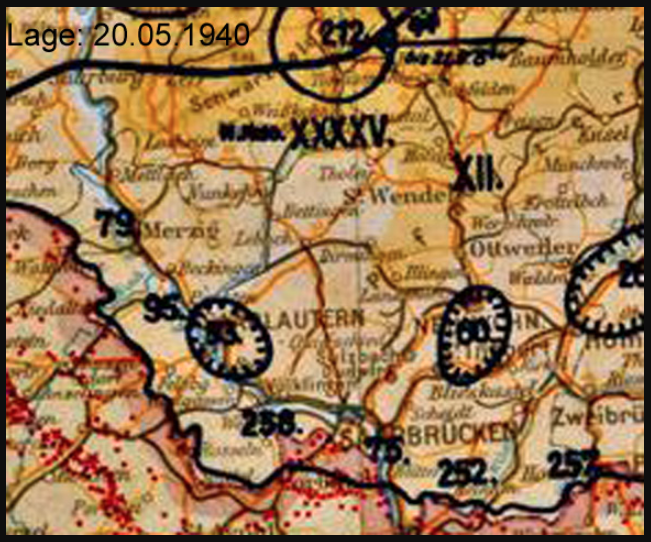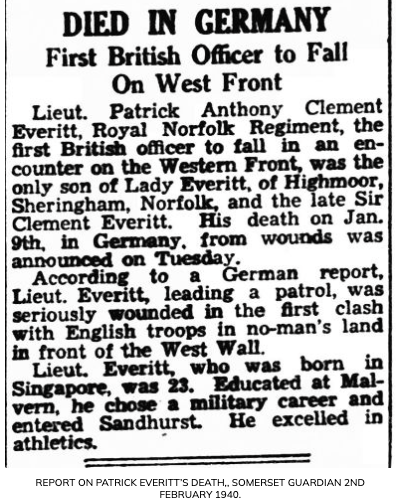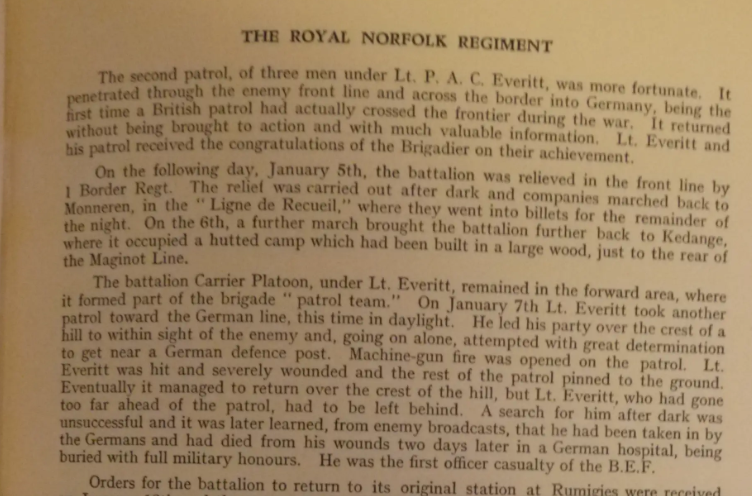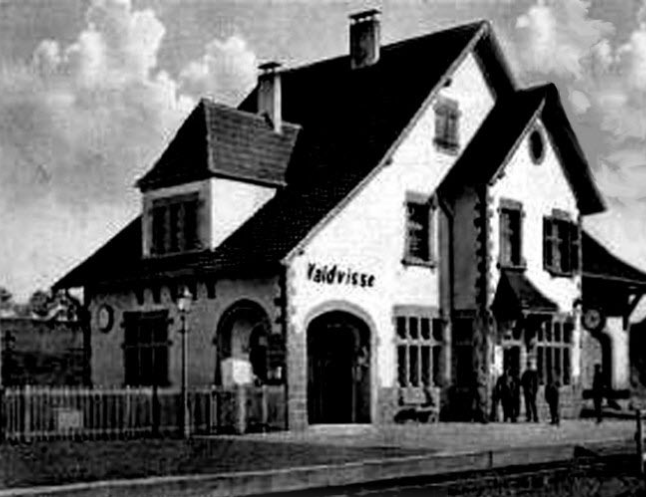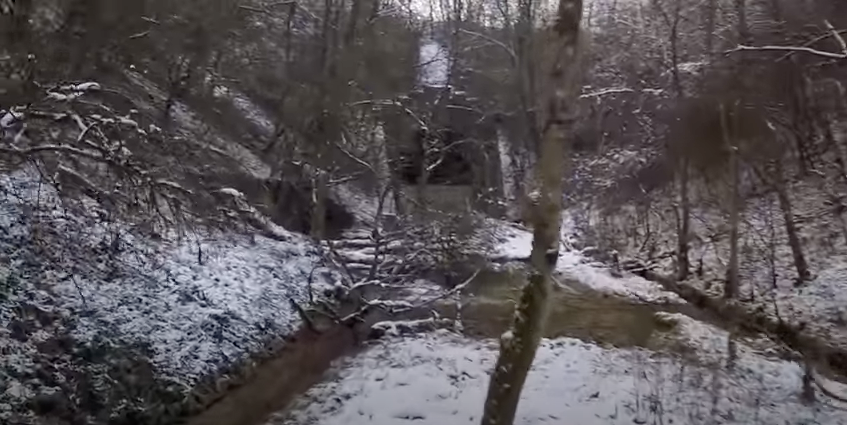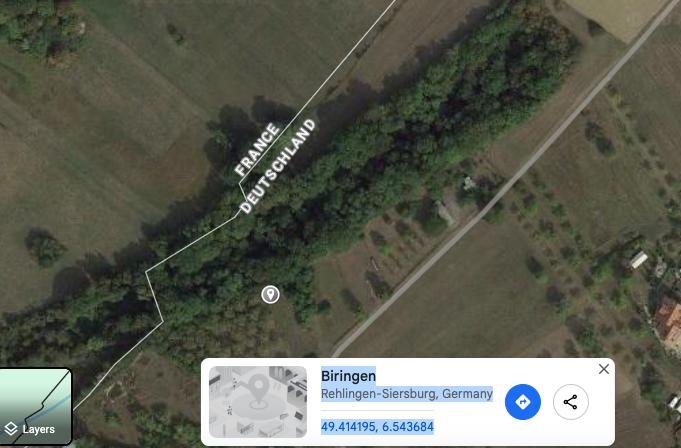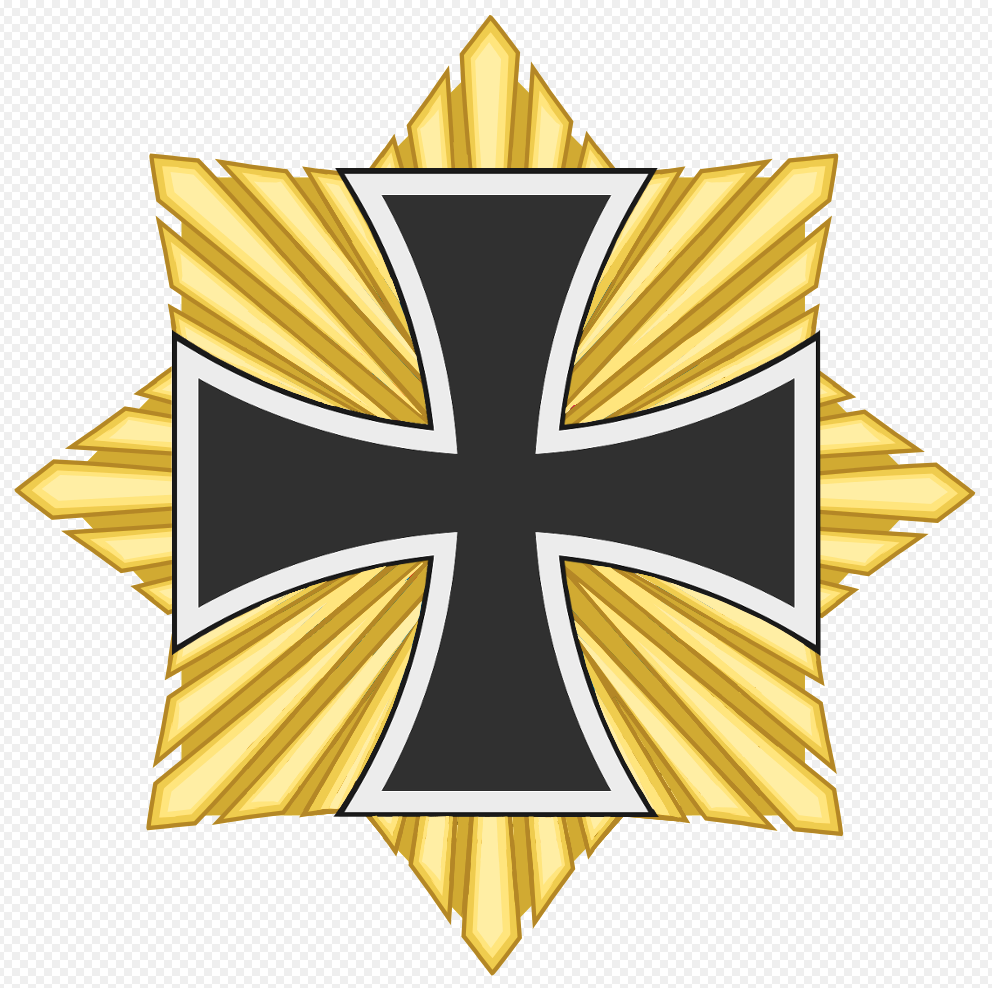
we remember
Wadern, Merzig-Wadern, Saarland, Germany
We Remember ✅ Everitt Patrick Anthony Clement, Giessen Jakob, Heiligensetzer Wilhelm, Papke Kurt, Schwemberger Herbert killed in action.
Where do they remain?
Wait for me, I'll come back, as many had said, to their wives, mothers, fathers, brothers, sisters and relatives have waited in vain for the homecoming to this day.
Wo sind sie geblieben ?
Wart’ auf mich, ich komm’ zurück, das hatten viele gesagt, zu ihren Frauen, Mütter Väter, Bruder, Schwester und Angehörige warteten vergeblich bis heute auf die Heimkehr.
📌 Name A to Z
📌 select Family Name
👉 👉 👉 Cross-Border - Copyright Guide 2018
📌 Name - E
EVERITT Patrick Anthony Clement
|
ID-Nr: P/71104 EVERITT Patrick Anthony Clement |
Military Cemetery, Weiskirchen, Merzig-Wadern, Saarland, Germany |
| Family Name | EVERITT | Forname(s): | Patrick Anthony Clement |
| Date of Birth: | 25.01.1916 | Gender: | M |
| District of birth: | Singapore | Country of Birth: | Republic of Singapore |
| Parents-Father: | Sir Clement, Everitt, was born in Wells, Norfolk on 22 December 1873 - ✝︎February 1934, at Sheringham, Norfolk | Parents-Mother: | Lady Everitt, born Croxeter, |
| Married to: | Elsie May Coxeter, Born in Abingdon, Berkshire 1885 - ✝︎1942 | Date of Married | July 1912 |
| Resident: | Highmoor, Abbey-road, Sheringham, Norfolk | Country of Origin: | United Kingdom |
| Service at the: | Royal Norfolk Regiment | Field mail number:: | 71104 |
| Regiment:: | 2nd. Bn. Royal Norfolk Regiment | Battalion : | 4th. INF. BDO |
| Platoon: | 2nd Bn. | Squad: | 2nd. Patro |
| Rank: | 2nd. Lieutenant (2-Lt. 28/1/37) | Field mail number: | P/71104 |
| Prisoner of war: | 2nd. Lieutenant Everitt was severely wounded in action and captured on german soil by the German Wehrmacht on the rail embankment between Waldwisse in France and Biringen in Germany | Date of captive : | 07.Jan.1940 |
| Date of Death: | 09.Jan.1940 | Age: | 23 |
| Circumstances leading to Death: | He was gravely wounded during a patrol and ultimately succumbed to severe blood loss from a bullet that struck his upper leg, fired by relentless German machine guns. | Cause of Death: | loss of blood |
| Place of Death: | Weiskirchen military hospital - 79th German Infanterie Division | District of Death: | Merzig- Wadern |
| Country of Death: | Germany | Federal state of Death: | Saarland |
|
Biography: 2nd Lieutenant Everitt: |
Patrick Anthony Clement Everitt Patrick Anthony Clement Everitt was born on January 25, 1916, in Singapore to Sir Clement and Lady Everitt of Sheringham during his parent's working assignment in the Republic of Singapore. Patrick Anthony Clement Everitt was enrolled at Malvern College from 1930 to 1935, where he distinguished himself as President of Athletics and secured the title in the Mile event. Following his tenure at Malvern, he proceeded to the Royal Military Academy Sandhurst, where he excelled as a junior officer, demonstrating exemplary leadership and discipline. He subsequently joined the Royal Norfolk Regiment, furthering his military career within his local garrison. His bravery and dedication to duty highlighted the values of his era, establishing him as a significant figure in military history. 2nd. Lieutenant Patrick Anthony Clement Everitt was the first officer of the British Expeditionary Force (BEF) to make the ultimate sacrifice in action. During a perilous patrol in the Waldwisse area (northern France), he was gravely wounded by relentless machine gun fire, advancing too far ahead of his men to be rescued amidst the chaos. Captured by German forces, he was hastily transported to a military hospital in Weiskirchen, where, despite their best efforts, he tragically succumbed to his injuries just two days later. His date of death stands as a poignant reminder of his bravery: January 9th, 1940. 2nd. Lieutenant Patrick Anthony Clement Everitt from the 2nd Battalion, Royal Norfolk Regiment, was honored with a dignified burial, complete with full military honors, by the German 79th Infantry Division at Weiskirchen War Cemetery. Following the war, his remains were respectfully recovered and reinterred in the Rheinberg War Cemetery, plot 13.E.3, on June 11, 1948. Additionally, he is commemorated on the Sheringham and Beeston War Memorial in Sheringham, Norfolk, Malvern College ensuring that his sacrifice is never forgotten. |
|
The Mission: British Expeditionary Force (BEF): |
2nd Battalion, Royal Norfolk Regiment In September 1939, with the outbreak of the Second World War, the 2nd Battalion of the Royal Norfolk Regiment was dispatched to northern France and Belgium. This deployment was part of the British Expeditionary Force (BEF), which consisted of British troops sent to assist in the defense of these regions during the early stages of the conflict. At the outbreak of the Second World War in September 1939, the 2nd Battalion of the Royal Norfolk Regiment was deployed as part of the British Expeditionary Force (BEF). This force was sent to northern France and Belgium to bolster defenses against German aggression along the Saar Front. Positioned close to the formidable Maginot Line, the battalion played a crucial role in the early stages of the conflict, engaging in strategic preparations and military operations to counter the advancing enemy. Their experiences during this period set the stage for the intense and challenging battles that would follow in the subsequent years of the war. The British Expeditionary Force (BEF) had a vital mission: to bolster French forces as they braced for an impending German invasion. Within this strategic framework, the 2nd Battalion emerged as a key player during the early months of the war. Engaging in critical reconnaissance missions and skirmishes, they navigated the tense and unpredictable landscape of a continent on the brink of conflict, their efforts instrumental in fortifying defensive positions against the looming threat. |
|
WAR DIARY: 2nd Lieutenant Everitt: |
Excerpt from the War diary - THE ROYAL NORFOLK REGIMENT 4th January 1940 Lt. Everitt was instructed to lead a Patrol into the enemy line during the evening with the mission of identifying enemy positions. The patrol was composed as: 2nd Lieut. P. A. J. Everitt, Pte. J. Jackson, Pte. N. Lilley, and Sgt. V. Newman. Lt. Everitt penetrated into Germany, this was the first time a British Patrol has actually crossed the frontline during the 2ndWW. 5th January 1940 During the morning dawn, Lt. Everitt with his Patrol reported back to the Commander in charge with the statement: mission successfully completed In accordance with the orders he received. In accordance with orders from the 2nd. Bn. Lt. Everitt border patrol unit was relieved from duty by there comrades in arms a relief border Patrol unit. Lt. Everitt with his Patrol traveled back via march route to MONNEREN. At MONNEREN the weather condition had improved and there did not experience such intense cold as it did the way to the front. 6th January 1940 In accordance with the 2nd. Bn. Operatives Orders Lt. Everitt with his Patrol traveled back via march route to KEDANGE which was completed in the afternoon and occupied a forest hutted camp which was built by the 2nd. Bn. |
|
WAR DIARY: 2nd Lieutenant Everitt: |
War Accident Details - Prisoner of war An excerpt from the 2nd. Bn War Diary which described the circumstances under which 2nd Lieut. P. A. J. Everitt failed to return from the patrol reads as follows: Sunday, January 7th. 1940, 06:45hrs. a cold winter day with a snow-covered landscape. In accordance with the 2nd. Bn. Operatives Orders Lt. Everitt was sent out by daylight with his Patrol at 06:45 hrs in front of the LOHMUHL WOOD to cover a wiring party. Sunday, January 7th. 1940, 11:00 hrs location: Waldwisse in northern France near the German border village in Biringen. The battalion Carrier Platoon, under Lt. Everitt, led part of his patrol unit to the top of the hill saying he was going to see what he could observe of the enemy and to make a sketch of what he saw. Sunday, January 7th. 1940, 11:30 hrs location: Waldwisse in northern France near the German border village in Biringen. Lt. Everitt led his party over the crest of a hill towards the HELTENBACH to within sight of the enemy and going on alone, attempted with great determination to get near a German defense post. Determined to get ever closer to this enemy defensive position, Lt. Everitt hurried on, opening a considerable gap between himself and his men. Sunday, January 7th. 1940, 12:15 hrs location: rail embankment between Waldwisse in France and Biringen in Germany German machine-guns opened fire, 15 rds of M. G. fire, Suddenly sweeping across the whole area and pinning the patrol to the ground. Lt. Everitt was hit and severely wounded the rest of the patrol pinned to the ground. Eventually, the patrol managed to return over the crest of the hill but without Lt. Everitt. Lt. Everitt, who had gone too far ahead of the patrol, had to be left behind. Lt. Everitt was captured by the German Wehrmacht (and taken to the military hospital Medical Services 179 - Field Hospital 179 in Weiskirchen alive). Monday, January 8th, 1940, during dawn: Waldwisse in northern France near the German border village in Biringen. A search was conducted to retrieve Lt. Everitt, signs in the snow indicated that he was wounded in a position about 150 to 200 yds from WALDWISSE Sta. but he was nowhere found. Later it was learned from the enemy broadcast station that he is alive but severely wounded and taken in by the Germans. Tuesday, January 9th, 1940, Medical Services 179 - Field Hospital 179 in Weiskirchen Germany. In spite of every medical attention, he died of loss of blood on the 9th of January 1940. 2nd. Lieutenant was buried with full military honors by the 79th Infanterie Division in Weiskirchen War Cemetery. |
|
1st Burial Cemetery: 9th of January 1940 |
Weiskirchen an der Saar, Germany, Military Cemetery The Weiskircher Ehrenfriedhof is a military cemetery located at the gates of the Hunsrück Black Forest in northern Saarland along the L151 road, just outside Weiskirchen. The war cemetery also known as “Kriegsgräberstätte” is located in the northern part of the federal state of Saarland who is bounded in the north and east by the state of Rhineland-Palatinate and in the south and south-west by France and in the west by Luxembourg. The capital is Saarbrücken. The military cemetery was established in 1939 within a Pinewood forest on historic ground where a Franconian burial site existed 1,500 years ago. Along the path of the 79th Infantry Division of the German Wehrmacht lie the first WW2 cemetery, which was inaugurated after arrival in September 1939 by the 79th Infantry Division in Weiskirchen an der Saar. Weiskirchen was the Wehrmacht's main Medical Field Hospital of the Medical Services 179 from the 79th Infantry Division station in 1939/40 and again in the winter of 1944/45. The last burials of German soldiers took place in March 1945. In the 1950s, the cemetery was expanded with additional burials from the Bliesgau region. A total of 786 World War II casualties found their final resting place here. The cemetery and a separate courtyard are located on a 8,000 square meter site. The graves are marked by sandstones bearing bronze plaques bearing the deceased's details. According to various historical records, 2nd. Lieutenant Patrick Anthony Clement Everitt was buried in January 1940 (exact date unknown) with full military honors by the 79th Infanterie Division in Weiskirchen War Cemetery at Plot-1, Row-3, Grave-3, Coordinates 49º55’63.78” N, 6º80’63.03” E. |
|
2nd Grave site: Reinterred June 11, 1948 |
RHEINBERG WAR CEMETERY, Germany, The reburial of 2nd. Lieutenant Patrick Anthony Clement Everitt remains were respectfully recovered and reinterred in the Rheinberg War Cemetery, Plot-13, Row-E, Grave-3, on June 11, 1948. Final resting place: For reasons that remain unclear, the Commonwealth War Graves Commission documented Patrick Everitt's date of death as January 7, 1940, in their grave concentration report dated September 22, 1948. This report was signed by Lt. Col. ADCRS, adding an official touch to the mystery surrounding his final resting place. Photo © all rights reserved by Des Philippet, A view towards the Headstone of Patrick Anthony Clement Everitt at the Rheinberg War Cemetery in Germany |
|
Historical Info Final resting place: |
Commonwealth War Graves Commission, The site of Rheinberg War Cemetery was chosen in April 1946 by the Army Graves Service for the assembly of Commonwealth graves recovered from numerous German cemeteries in the area. The majority of those now buried in the cemetery were airmen, whose graves were brought in from Düsseldorf, Krefeld, Mönchengladbach, Essen, Aachen, Dortmund, Nunkirchen and Weiskirchen im Saarland; 450 graves were from Cologne (Köln) alone. The men of the other fighting services buried here mostly lost their lives during the battle of the Rhineland, or in the advance from the Rhine (Rhein) to the Elbe Coordinates: 51°31′46″N 06°33′48″E near Rheinberg, Germany |
|
Historical Info 79. Infanterie Division German Wehrmacht: |
Sanitäts-Kompanien 179 - Feldlazarett 179, Weiskirchen The medical services 179 were subordinate to the 79th Infantry Division of the German Wehrmacht. The two medical companies 179 were set up in Bad Ems from August 26 to August 30, 1939. On August 30th the field hospital arrived in Weiskirchen and was ready for the reception on August 31st in the evening. The hospital was able to occupy 200 beds, 50 of which were for the seriously injured. The internal department was set up in the school building, the surgical department in the youth hostel, and a tavern room for segregation cases. A Military Cemetery has been set up near the hospital within a Pinewood forest outside the village of Weiskirchen along the country road L-151 for the deceased soldiers in the hospital and for the fallen soldiers of the 79th ID. All foreign soldiers which deceased during the 2nd.WW at the military hospital in Weiskirchen is first buried in the military cemetery in Weiskirchen. After the war, they were relocated to there respective locations. The remains of Lieutenant Everitt were exhumed after the war and were reburied at the Military Cemetery in Rheinberg. |
|
Historical Development & Remarks: 79th ID German Wehrmacht January 1940 |
The 79th Infantry Division - German Wehrmacht The 79th Infantry Division was officially formed on August 26, 1939, as part of the 2nd Wave Division, also known as the Reserve Division of World War XII. This establishment was orchestrated by the Infantry Commander of the 34th Infantry Division in Idar-Oberstein, in collaboration with the personnel from the 33rd, 34th, and 35th Infantry Divisions. As tensions escalated into armed conflict, the division was swiftly relocated westward and assigned to the 1st Army, strategically positioned in the region between Merzig and St. Ingbert. This area served as a vital staging ground for operations, and the division remained there in preparation for the extensive military maneuvers that characterized the early stages of the war, known as the Western Campaign. 📌 The Lagekarte May 1940, Saarpfalz, Maginotline On January 1, 1940, the division commander formally introduced and endorsed the division's motto: "Brave and Loyal," which was intended to inspire unity and resilience among the troops as they geared up for the challenges ahead. This motto reflected the division's commitment to their mission and camaraderie in the face of adversity. Time Table 29.08.1939, The German Wehrmacht was Occupying the Westwall along the Saar/Mosel river, the main battle line was between Saarbrücken, Saarlouis, Merzig, Saarburg and Trier. 03.09.1939 - 03.11.1939, Defence and protection of the apron in the south/west area of Merzig/Saar was established 05.11.1939 - 09.05.1940, Battlegroups and field fights in the area south/west of Merzig/Saar has started off. From May 13 to May 20, 1940, intense military operations commenced against the Maginot Line, a formidable defensive fortification established by France along its eastern border. During this period, the Royal Norfolk Regiment, a distinguished unit of the British Army, was deployed as part of the renowned 51st (Highland) Infantry Division. This division was strategically positioned opposite the 79th Infantry Division of the German Wehrmacht. The units faced each other along a key stretch of territory, spanning from Mettlach to Merzig, Beckingen, and Dillingen, located along the banks of the Saar River. The battle lines were drawn in a landscape heavily fortified with bunkers and obstacles, where the clash of tactics and firepower would define the course of the conflict in this pivotal theater of World War II. 17.06.1940 - 24.06.1940, Beginning of the morn on Luneville and advanced to Epinal in France territory. |
| History: |
13.05.1940, beginn of the French campain 25.06.1940. Armistice with France. |
|
Research source: Evidence: |
Important Note: Newspapers: 📌 The Commonwealth War Graves Commission, According to various historical records, including the detailed Royal Norfolk Regiment War Report and several newspaper articles that featured accounts provided by his family, he tragically passed away two days later, on January 9, 1940. The accounts highlight the circumstances surrounding his death and convey the profound impact it had on his loved ones. This loss not only marked a significant moment in his family's history but also resonated within the local community, which remembered him for his bravery and dedication. 📌 These report in the |
|
Research source: Evidence: |
Obituarie: Lady Elise May Everitt Everitt: In proud and loving memory of my beloved son, TONY , Lieutenant, 2nd Batt. The Royal Norfolk Regiment, who gave his life so willingly for his Country. The First British officer to be taken Prisoner in Germany, he died of his wounds two days prior on Jan. 9. 1940 📌 These Obituarie of Lady Elise May Everitt in the |
|
Research source: Evidence: |
British Expeditionary Force (BEF) - War Report - The Royal Norfolk Regiment, Date of POW: January 7th. 1940, >>12:15 hrs location: rail embankment between Waldwisse in France and Biringen in Germany , captured by the German Wehrmacht on German soil. 📌 The Royal Norfolk Regiment, War Report |
|
Historical Facts Ancient Railway Waldwisse to Merzig 1917 - 1936/2025 |
History is not simply a backdrop; it serves as the rich, intricate foundation that deepens our understanding of the past. By examining the events, cultures, and experiences that have shaped our world, we can gain valuable insights that illuminate the complexities of future developments. In this article, I invite you to step away from the events of World War II and embark on a captivating journey through the vibrant history of these railway line. Delve into the myriad stories they carry, each one a testament to the lives intertwined along their routes. Discover the profound significance of these pathways, which have not only shaped communities but also woven together the fabric of countless lives throughout the ages. The railway line from Bettelainville to Waldwisse was originally established as a segment of the broader route connecting Bettainville to Merzig. This strategic line was officially inaugurated in 1917 by the Imperial General Directorate of the Alsace-Lorraine Railways (EL), a body responsible for managing rail transport in the region during a time of significant geopolitical change. After the conclusion of World War I in 1919, the French section of this railway became the responsibility of the Alsace-Lorraine Railways Administration (AL), which oversaw its operations and maintenance during a period of reconstruction and reintegration into France. In 1938, the management of the line was transitioned to the French National Railways Company (SNCF), marking a significant shift in rail operations as SNCF sought to modernize and enhance the efficiency of railway services across France. This line played a crucial role in regional connectivity and economic development throughout the 20th century. After the annexation of Alsace-Lorraine in 1871, the German government sought to integrate the region more closely with the German Empire by redirecting the rail network toward the Reich. This initiative included the construction of a crucial rail line designed to facilitate transport and commerce. In addition, by the end of the nineteenth century, many villages in the Waldwisse region were eager for this railway line, as it promised to reduce their sense of isolation and improve access to larger urban centers. Residents believed that enhanced rail connectivity would spur economic growth and increase their mobility. Consequently, comprehensive studies on the feasibility and route of the rail line began in 1902, focusing on the topography and infrastructure needs of the area. After thorough planning and community consultations, construction work officially commenced in 1909, marking a significant development in the region’s transportation network. The railway line was inaugurated on November 1, 1917, establishing a connection to the Alsace-Lorraine Railway, which was then under German control. This line traversed a section of Saarland, a region known for its rich industrial heritage. The operation of the entire railway line was managed by the regional administration of Saarland, ensuring coordinated services and maintenance. By 1927, the line was serving three return trips daily along its 40 km stretch, facilitating movement of passengers and goods. Additionally, the railway offered special services to Mondorf, a popular destination known for its spa facilities, enhancing accessibility for visitors and locals alike. **Saarland Status Change** In 1936, after the Saar region was returned to Germany following the Treaty of Versailles, tensions began to surface between Germany and France. A significant point of contention was the Silwingen tunnel, which featured a 621-meter segment located within the Saar region, part of its total length of 1715 meters. This specific section was crucial for transportation and communication, further complicating regional relations. The entire management of the railway line, vital for both domestic and international travel, fell under the jurisdiction of Saarland authorities. In 1927, the railway line was operational with three round trips conducted daily over its 40-kilometer stretch. Additionally, there were services extending to Mondorf, highlighting the line's importance in connecting local communities and facilitating cross-border travel. These operational details reflect not only the railway's functionality but also its role in the geopolitical landscape of the time. **The Second World War** In 1939, shortly after the onset of World War II on September 3, the strategically important Saarland viaduct was destroyed during military operations and was never rebuilt, marking a significant disruption in transportation. Following the annexation of a portion of northeastern France by Nazi Germany, rail traffic resumed in October 1941, connecting the towns of Mondorf and Bettelainville. Omnibus trains, which were crucial for transporting both goods and passengers, ran routes from Merzig to Bettelainville, traversing through Hombourg-Budange. However, on November 17, 1944, the railway line experienced another severe disruption when three concrete bridges located south of the Silwingen tunnel were detonated to impede advancing Allied forces. In the chaos of the German retreat later that month, seven additional bridges were systematically demolished to prevent their use by enemy troops. In the aftermath, as Allied troops pushed further into occupied territory, the US military took charge of clearing the debris from the railway line. They undertook significant repair efforts to restore the track northwards to Mondorf, allowing for the resumption of crucial transportation links needed for the logistical support of military operations in the region. |
| Memorial: | Malvern College WW2 Memorial |
| Web-Link to : |
|
| Web-Link to : |
|
| Web-Link to : |
|
| Web-Link to : |
|
| © all rights reserved: |
👉 2015/Dec.2024 © by Skr., all rights reserved by the Author What acts constitute primary infringement of copyright? The Author - how to obtain copyright protection When you create a literary, scientific, or artistic work, you automatically receive copyright protection as soon as your work is fixed in a tangible form, such as written down, recorded, or otherwise captured. This protection grants The Author exclusive rights to use, distribute, and modify his work. Importantly, you do not need to go through a formal application process or register his work with any governmental body to obtain this protection, as copyright is automatically granted upon creation. This means that as an author, inventor, or artist, his original creations are safeguarded against unauthorized use or reproduction by others right from the moment of their inception. Reproducing, distributing, or communicating any information from this website to the public as a published work for the purpose of quotation is strictly prohibited without explicit permission. However, if you wish to use any content, you must include a proper copyright notice (e.g., ©), along with the author's name and a reference to the author's official website or profile. This inclusion is essential as it serves to establish a presumption that the individual identified is indeed the rightful author of the quoted material. Failure to adhere to these guidelines may result in legal consequences and undermines the author's intellectual property rights under EU-Law. https://www.rpclegal.com/-/media/rpc/files/perspectives/ip/germany.pdf 👉 👉 👉 Cross-Border Copyright Guide 2018 |
| Return to Top | To the top |
📌 Name - G
GIESSEN Jakob
|
ID-Nr: GIESSEN Jakob |
Military Cemetery, Weiskirchen, Wadern, Merzig-Wadern, Germany |
| Family Name | GIESSEN | Forname(s): | Jakob |
| Date of Birth: | 26.Oct.1900 | Gender: | M |
| District of birth: | St. Ingbert | Country of birth: | Saarland, Germany |
| Parents-Father: | unknown | Parents-Mother: | unknown |
| Married to: | unknown | ||
| Resident: | St. Ingbert, Saarland | Country of Origin: | Germany |
| Division: | 79th.Infantry Division of the German Wehrmacht | Field mail number:: | 21645 |
| Army corps: | Sep. 1939 to May 1940, XII & XXX | Army group: | 1st. Armee, C, Saarpfalz |
| Unit: | 2.Kp.Ers.Pi.74, Nr77 | Squad: | 2.Kp.Ers.Pi. |
| Rank: | Pionier | Field mail number: | 21645 |
| Prisoner of war: | ....... | Date of captive : | ........ |
| Date of Death: | 09.Sep.1939 | Age: | 38 |
| Circumstances leading to Death: | severely wunded during patrol | Cause of Death: | unknown |
| Place of Death: | Biringen | District of Death: | Merzig- Wadern |
| Country of Death: | Germany | Federal state of Death: | Saarland |
|
79th. Inf. Div. German Wehrmacht: |
30.08.1939, Arrival of the 79th. Inf. Div. in the area of Weiskirchen/Saar. The medical services 179 were subordinate to the 79th Infantry Division of the German Wehrmacht. The two medical companies 179 were set up in Bad Ems from August 26 to August 30, 1939. On August 30th the field hospital arrived in Weiskirchen and was ready for the reception on August 31st in the evening. The hospital was able to occupy 200 beds, 50 of which were for the seriously injured. The internal department was set up in the school building, the surgical department in the youth hostel, and a tavern room for segregation cases. A Military Cemetery has been set up near the hospital within a Pinewood forest outside the village of Weiskirchen along the country road L-151 for the deceased soldiers in the hospital and for the fallen soldiers of the 79th ID. |
| Grave site: |
On 09.09.1939 the first fallen soldiers of this unit Giessen Jakob, Pionier of the Pionier-Bataillon 179, were to be mourned during the apron battles on the Siegfried Line and was buried here at Block-1, Row-3 (C), Grave-22 |
| Weiskirchen at September 1939 : |
The 1st Military Cemetery on the path of the 79th Infantry Division of the German Wehrmacht was established in Sep. 1939 during the 2nd.WW in Weiskirchen
|
| Web-Link to : |
|
|
Grave site Historical Inform.: |
On historical grounds, where there was a Franconian burial place 1,500 years ago. In the grave field, Block 1 and Block 2, there are 19 rows of graves in alphabetical order on the left and right along the main path. The individual gravesites are marked by sandstones with bronze plaques bearing the names of the days of birth and death of the fallen. In another Block-3 there is a comrade's grave, also known as a collective grave, with unknown war victims. On 09.09.1939 the first fallen soldiers of this unit were to be mourned during the apron battles on the Siegfried Line and was buried here. The majority of the members of the 79th Infantry Division fell on French soil in the attack on the Maginot Line on May 13, 1940, near Flatten - a small Lorraine town across the border. In 1939/40 and also in the winter of 1944/45 Weiskirchen was the main first aid station of the Wehrmacht; the last burials within the troops took place around March 15th, 1945. At the beginning of the fifties, the cemetery was expanded by adding additions to graves of war victims from the Bliesgau, Nunkirchen. This war cemetery was laid out in its current form by the Saarland government, in cooperation and with the financial contribution of the Volksbund. The establishment and maintenance of the cemetery are now in the care of the Saarland state government. |
| Historical Development & Remarks: |
The medical services 179 were subordinate to the 79th Infantry Division. The two medical companies 179 were set up in Bad Ems from August 26 to August 30, 1939. 29.08.1939, The German Wehrmacht was Occupying the Westwall along the Saar/Mosel river, the main battle line was between Saarbrücken, Saarlouis, Merzig, Saarburg and Trier. 03.09.1939 - 03.11.1939, Defence and protection of the apron in the south/west area of Merzig/Saar was established 05.11.1939 - 09.05.1940, Battlegroups and field fights in the area south/west of Merzig/Saar has started off. 13.05.1940 - 20.05.1940, Attacks has started on Maginot line and on English forest stands of the 2nd Battalion. The Royal Norfolk Regiment. Div. is part of the famous 51st (Highland) Infantry Division which stands oposide of the 79th. Inf. Div. of the German Wehrmacht between Mettlach - Merzig - Beckingen - Dillingen on the river Saar. 17.06.1940 - 24.06.1940, Beginning of the morn on Luneville and advanced to Epinal in France territory. |
| History: |
13.05.1940, beginn of the French campain 25.06.1940. Armistice with France. |
| Research source: | |
| Memorial: | unknown |
| Web-Link to : |
|
| Web-Link to : |
|
| all rights reserved: | 2015 © by Skr., all rights reserved the Author |
| Return to Top | To the top |
📌 Name - H
HEILIGENSETZER Wilhelm
|
ID-Nr: HEILIGENSETZER Wilhelm |
Military Cemetery, Weiskirchen, Wadern, Merzig-Wadern, Germany |
| Family Name | HEILIGENSETZER | Forname(s): | Wilhelm |
| Date of Birth: | 20.Jun.1926 | Gender: | M |
| District of birth: | Betzigau | Country of birth: | Oberallgäu in Bavaria, Germany |
| Parents-Father: | unknown | Parents-Mother: | unknown |
| Married to: | unknown | ||
| Resident: | Betzigau, Oberallgäu | Country of Origin: | Germany |
| Division: | 19. Volks Grenadier Division of the German Wehrmacht | Field mail number:: | unknown |
| Army corps: | 9. Oct.1944, LXXIII, | Army group: | 1st. Armee, G, Saarpfalz, |
| Unit: | Grenadier Regiment 74 | Squad: | unknown |
| Rank: | Grenadier | Field mail number: | unknown |
| Prisoner of war: | ....... | Date of captive : | ........ |
| Date of Death: | 13.Mar.1945 | Age: | 18 |
| Circumstances leading to Death: | severely wunded during action | Cause of Death: | unknown |
| Place of Death: | Brebach-Fechingen | District of Death: | Stadtbezirks Saarbrücken Halberg. |
| Country of Death: | Germany | Federal state of Death: | Saarland |
|
79th. Inf. Div. German Wehrmacht: |
30.08.1939, Arrival of the 79th. Inf. Div. in the area of Weiskirchen/Saar. The medical services 179 were subordinate to the 79th Infantry Division of the German Wehrmacht. The two medical companies 179 were set up in Bad Ems from August 26 to August 30, 1939. On August 30th the field hospital arrived in Weiskirchen and was ready for the reception on August 31st in the evening. The hospital was able to occupy 200 beds, 50 of which were for the seriously injured. The internal department was set up in the school building, the surgical department in the youth hostel, and a tavern room for segregation cases. A Military Cemetery has been set up near the hospital within a Pinewood forest outside the village of Weiskirchen along the country road L-151 for the deceased soldiers in the hospital and for the fallen soldiers of the 79th ID. |
| Grave site and final resting place: |
One of the youngest Soldiers 18 years old Heiligensetzer Wilhelm, Grenadier of the 19. Volks Grenadier Division of the German Wehrmacht was buried here at Weiskirchen Plot-1, Row-1 (A), Grave-42 |
| Weiskirchen at September 1939 : |
The 1st Military Cemetery on the path of the 79th Infantry Division of the German Wehrmacht was established in Sep. 1939 during the 2nd.WW in Weiskirchen
|
| Web-Link to : |
|
|
Grave site Historical Inform.: |
On historical grounds, where there was a Franconian burial place 1,500 years ago. In the grave field, Block 1 and Block 2, there are 19 rows of graves in alphabetical order on the left and right along the main path. The individual gravesites are marked by sandstones with bronze plaques bearing the names of the days of birth and death of the fallen. In another Block-3 there is a comrade's grave, also known as a collective grave, with unknown war victims. On 09.09.1939 the first fallen soldiers of this unit were to be mourned during the apron battles on the Siegfried Line and was buried here. The majority of the members of the 79th Infantry Division fell on French soil in the attack on the Maginot Line on May 13, 1940, near Flatten - a small Lorraine town across the border. In 1939/40 and also in the winter of 1944/45 Weiskirchen was the main first aid station of the Wehrmacht; the last burials within the troops took place around March 15th, 1945. At the beginning of the fifties, the cemetery was expanded by adding additions to graves of war victims from the Bliesgau, Nunkirchen. This war cemetery was laid out in its current form by the Saarland government, in cooperation and with the financial contribution of the Volksbund. The establishment and maintenance of the cemetery are now in the care of the Saarland state government. |
| 19. Volks Grenadier Division of the German Wehrmacht: |
Set up on August 8, 1944, in Esbjerg in Denmark and subordinated to the 19th Grenadier Division. The staff came from parts of the Jutland shadow division. On October 9, 1944, it was placed under the 19th People's Grenadier Division and was deployed in the Saar Palatinate at the location to the west of Saarlautern (today Saarlouis) in the area of Bouzonville on France soil. 1.Dec.1944, the 19.VGr was stationary at Merzig an der Saar. On January 13, 1945 the division had a combat strength of 1,500 to 2,000 men. After the loss-making retreat battles were the divisions of the XIII. SS army corps in defense between Saarbrücken and Bitsch. Until the end of January 1945, there was no longer any decisive fighting. Priority was given to the expansion of field positions and the expansion of the western wall. On February 6, 1945, the local attack by US troops began against the right-wing of the already severely weakened 19th People's Grenadier Division. During these attacks, the US troops were able to take possession of the Blieshöhen not far from the city of Saareguemines. 01.Mar.1945, 19.VGr was stationary near Saarbrücken beside 17.SS,Pz.Grn. On March 20, 1945, 19.VGr was moved to Kaiserslautern. |
|
History on the West Wall: |
13.05.1940, beginn of the French campain 25.06.1940. Armistice with France. 06.Feb.1945 US troops began attacking the Saarbrücken area. |
| Research source: | |
| Memorial: | in Betzigau on memorial plaque |
| Web-Link to : |
|
| Web-Link to : |
|
| all rights reserved: | 2015 © by Skr., all rights reserved the Author |
| Return tp Top | To the top |
📌 Name - P
PAPKE Kurt
|
ID-Nr: PAPKE Kurt |
Military Cemetery, Weiskirchen, Wadern, Merzig-Wadern, Germany |
| Family Name | PAPKE | Forname(s): | Kurt |
| Date of Birth: | 01.Dec.1924 | Gender: | M |
| Place of birth: | Simötzel, Ost Preußen | Country of birth: | Ost Preußen, Germany |
| Parents-Father: | unknown | Parents-Mother: | unknown |
| Married to: | unknown | ||
| Resident: | Simötzel, Kreis Kolberg-Körlin in Pommern | Country of Origin: | Ost Preußen, Germany |
| Division: | 17. SS-Panzergrenadier-Division "Götz von Berlichingen" | Field mail number:: | unknown |
| Army corps: | Feb 1945 to March 1945 XIII SS, | Army group: | 1st. Armee, G, Saarpfalz, |
| Unit: | 17. SS Pz. Gren. Div. | Squad: | unknown |
| Rank: | Corporal (Obergefreiter) | Field mail number: | unknown |
| Prisoner of war: | ....... | Date of captive : | ........ |
| Date of Death: | 17.Mar.1945 | Age: | 19 |
| Circumstances leading to Death: | mortally wounded during action | Cause of Death: | unknown |
| Place of Death: | Triebenberg, Westwallbunker at Saarbrücken- Ensheim | District of Death: | Stadtbezirks Saarbrücken Halberg. |
| Country of Death: | Germany | Federal state of Death: | Saarland |
|
79th. Inf. Div. German Wehrmacht: |
30.08.1939, Arrival of the 79th. Inf. Div. in the area of Weiskirchen/Saar. The medical services 179 were subordinate to the 79th Infantry Division of the German Wehrmacht. The two medical companies 179 were set up in Bad Ems from August 26 to August 30, 1939. On August 30th the field hospital arrived in Weiskirchen and was ready for the reception on August 31st in the evening. The hospital was able to occupy 200 beds, 50 of which were for the seriously injured. The internal department was set up in the school building, the surgical department in the youth hostel, and a tavern room for segregation cases. A Military Cemetery has been set up near the hospital within a Pinewood forest outside the village of Weiskirchen along the country road L-151 for the deceased soldiers in the hospital and for the fallen soldiers of the 79th ID. |
| 1st Grave site: |
Triebenberg an der Saar, Germany, Military Cemetery
|
| 2nd Grave site and final resting place: |
One of the youngest Soldiers 19 years old PAPKE Kurt, Corporal (Obergefreiter) of the 17. SS-Panzergrenadier-Division "Götz von Berlichingen" was buried here at Weiskirchen Plot-1, Row-9 (J), Grave-18 |
| Weiskirchen at September 1939 : |
The 1st Military Cemetery on the path of the 79th Infantry Division of the German Wehrmacht was established in Sep. 1939 during the 2nd.WW in Weiskirchen
|
| Web-Link to : |
|
|
Weiskirchen Grave site Historical Information: |
On historical grounds, where there was a Franconian burial place 1,500 years ago. In the grave field, Block 1 and Block 2, there are 19 rows of graves in alphabetical order on the left and right along the main path. The individual gravesites are marked by sandstones with bronze plaques bearing the names of the days of birth and death of the fallen. In another Block-3 there is a comrade's grave, also known as a collective grave, with unknown war victims. On 09.09.1939 the first fallen soldiers of this unit were to be mourned during the apron battles on the Siegfried Line and was buried here. The majority of the members of the 79th Infantry Division fell on French soil in the attack on the Maginot Line on May 13, 1940, near Flatten - a small Lorraine town across the border. In 1939/40 and also in the winter of 1944/45 Weiskirchen was the main first aid station of the Wehrmacht; the last burials within the troops took place around March 15th, 1945. At the beginning of the fifties, the cemetery was expanded by adding additions to graves of war victims from the Bliesgau, Nunkirchen. This war cemetery was laid out in its current form by the Saarland government, in cooperation and with the financial contribution of the Volksbund. The establishment and maintenance of the cemetery are now in the care of the Saarland state government. |
| 17th SS Panzer Grenadier Division of the German Wehrmacht: |
On September 2, 1944, the 17.SS Pz.Gr. Div. was placed under the XIII. SS-Armeekorps and was deployed in the Saar Palatinate at the location to the west of Saarlautern (today Saarlouis) in the area of Metz on France soil to took over a section of the front south of Metz at the XIII. SS Army Corps. On October 1 1944 , the 17.SS Pz.Gr. Div. to took over a section of the front south of Metz at the XIII. On November 1, 1944, the 17.SS Pz.Gr. Div. at the location to the west of Saargemünd in the south of Metz on France soil. On November 8th, the Americans broke the division's bridgehead, 1.Dec.1944, the 17th SS Panzer Grenadier Division was stationary at Saargemünd. 23.Jan.1945, the 17th SS Panzer Grenadier Division was stationary near Saarbrücken. 6.Feb.1945, the local attack by US troops began against the right-wing of the already severely weakened 17th SS Panzer Grenadier Division (Götz von Berlichingen). During these attacks, the US troops were able to take possession of the Blieshöhen not far from the city of Saargemünd. 01.Mar.1945, the 17.SS,Pz.Grn. was stationary near Saarbrücken beside 19.VGr. 15.Mar.1945, Aircraft of the 12th US Tactical Air Command flew ground support missions to bomb the Siegfried Line positions on the Triebenberg near Bischmisheim. 15.Mar.1945, attack of the 254th Infantry Regiment, 63rd US Division on Ensheim. 20.Mar.1945, the German Wehrmacht units of the 17th SS Panzer Grenadier Division (Götz von Berlichingen) gave up the position on the Westwall Bunker in Triebenberg and retreated towards the Rhine. |
|
History on the West Wall: |
13.05.1940, beginn of the French campain 25.06.1940, Armistice with France. 06.Feb.1945, US troops began attacking the Saarbrücken area. 20.Mar.1945, 17th SS Panzer Grenadier Division gave up the position on the Westwall Bunker in Triezenberg and retreated towards the Rhine. |
| Research source: | |
| Memorial: |
|
| Web-Link to : |
|
| Web-Link to : |
|
| all rights reserved: | 2015 © by Skr., all rights reserved the Author |
| Return to Top | To the top |
📌 Name - S
SCHWEMBERGER Herbert
|
ID-Nr: SCHWEMBERGER Herbert |
Military Cemetery, Weiskirchen, Wadern, Merzig-Wadern, Germany |
| Family Name | SCHWEMBERGER | Forname(s): | Herbert |
| Date of Birth: | 21.Oct.1919 | Gender: | M |
| Place of birth: | Kufstein, Tirol | Country of birth: | Austria |
| Parents-Father: | unknown | Parents-Mother: | unknown |
| Married to: | unknown | ||
| Resident: | Kufstein, Tirol | Country of Origin: | Austria |
| Division: | 2. Gebirgs-Division" | Field mail number:: | unknown |
| Army corps: | March. 1945 LXXXII, | Army group: | 1st. Armee, G, Hunsrück, |
| Unit: | Mountaineer of 2nd Mountain Division | Squad: | unknown |
| Rank: | Sergeant (Unteroffizier) | Field mail number: | unknown |
| Prisoner of war: | ....... | Date of captive : | ........ |
| Date of Death: | 03.Mar.1945 | Age: | 25 |
| Circumstances leading to Death: | mortally wounded during action | Cause of Death: | unknown |
| Place of Death: | near Lampaden at the area Hunsrück | District of Death: | Trier-Saarburg |
| Country of Death: | Germany | Federal state of Death: | Rhineland- Palatinate |
|
79th. Inf. Div. German Wehrmacht: |
30.08.1939, Arrival of the 79th. Inf. Div. in the area of Weiskirchen/Saar. The medical services 179 were subordinate to the 79th Infantry Division of the German Wehrmacht. The two medical companies 179 were set up in Bad Ems from August 26 to August 30, 1939. On August 30th the field hospital arrived in Weiskirchen and was ready for the reception on August 31st in the evening. The hospital was able to occupy 200 beds, 50 of which were for the seriously injured. The internal department was set up in the school building, the surgical department in the youth hostel, and a tavern room for segregation cases. A Military Cemetery has been set up near the hospital within a Pinewood forest outside the village of Weiskirchen along the country road L-151 for the deceased soldiers in the hospital and for the fallen soldiers of the 79th ID. |
| 1st Grave site and final resting place: |
One of the Austrien Soldiers SCHWEMBERGER Herbert, Sergeant (Unteroffizier) of the 2. Gebirgs-Division or (“Mountain Hunter”) was buried here at Weiskirchen Block-2, Row-5 (S), Grave-24 |
| Weiskirchen at September 1939 : |
The 1st Military Cemetery on the path of the 79th Infantry Division of the German Wehrmacht was established in Sep. 1939 during the 2nd.WW in Weiskirchen
|
| Web-Link to : |
|
|
Weiskirchen Grave site Historical Information: |
On historical grounds, where there was a Franconian burial place 1,500 years ago. In the grave field, Block 1 and Block 2, there are 19 rows of graves in alphabetical order on the left and right along the main path. The individual gravesites are marked by sandstones with bronze plaques bearing the names of the days of birth and death of the fallen. In another Block-3 there is a comrade's grave, also known as a collective grave, with unknown war victims. On 09.09.1939 the first fallen soldiers of this unit were to be mourned during the apron battles on the Siegfried Line and was buried here. The majority of the members of the 79th Infantry Division fell on French soil in the attack on the Maginot Line on May 13, 1940, near Flatten - a small Lorraine town across the border. In 1939/40 and also in the winter of 1944/45 Weiskirchen was the main first aid station of the Wehrmacht; the last burials within the troops took place around March 15th, 1945. At the beginning of the fifties, the cemetery was expanded by adding additions to graves of war victims from the Bliesgau, Nunkirchen. This war cemetery was laid out in its current form by the Saarland government, in cooperation and with the financial contribution of the Volksbund. The establishment and maintenance of the cemetery are now in the care of the Saarland state government. |
| 2. Gebirgs-Division or (“Mountain Hunter”) : |
Die 2. Gebirgs-Division wurde am 1. April 1938 in Innsbruck, im Wehrkreis XVIII, aufgestellt. Prior to annexation by Nazi Germany, and even prior to the existence of the Third Reich, Austrian mountain troops and ski troops had made a name for themselves, not just as soldiers, but also as superior mountaineers and downhill/cross-country skiers. Gebirgsjäger (“Mountain Hunter”) units were created in 1906 as a force to defend the region of the South Tyrol, part of the border of what was the old Austro-Hungarian empire, and now the border between Austria and Italy. Later units were formed in order to operate in the Carpathian Mountains by the Hungarian “side” of the empire. Existing Landesschützen (“State Rifles”) and Genderme (Border Police) units were converted for the purpose. These units gained an excellent reputation during WW1 for their fighting abilities and proficiency for operating in mountainous climates. The Austro-Hungarian Gebirgsjäger adopted the Edelweiss as their distinctive unit insignia. The Edelweiss symbolized martial prowess, bravery, rugged beauty and purity to many people living in the Alps region for centuries (ancient examples being found on Roman gravestones for Austrian Soldiers): In February 1945, the 2nd Mountain Division was deployed in the Saarpfalz, upper Alsace region, and the Hunsrück the region south of Trier. 23.Feb.1945, the 94th Infantry Division (United States) under the command of Lieutenant Colonel William A. McNulty, of the 94th's 3rd Battalion, 301st Infantry Regiment crossed the icy and swollen Saar at Serrig. 2 March 1945, by this time the 94th Infantry Division (United States) stretched over a 10-mile front, from Hocker Hill on the Saar through Zerf, and Lampaden to Ollmuth at the area Husnsrück. 02.03.1945, At that time the 2nd. Mountain Division was operating in the area Hunsrück between Trier on the Mosel and was stationary in Weiskirchen in Saarland. 03.03.1945, At that time the 2nd. Mountain Division of the German Wehrmacht was operating against the 94th Infantry Division (United States) near Lampaden. A heavy German attack near Lampaden achieved penetrations, but the line was shortly restored by the 94th Infantry Division (United States) and with heavy losses to the German Army . |
|
History on the West Wall: |
13.05.1940, beginn of the French campain 25.06.1940, Armistice with France. 06.Feb.1945, US troops began attacking the Saarbrücken area. 23.Feb.1945, the 94th Infantry Division (United States) crossed the river Saar at Serrig. 02.Mar.1945, the frontline of the 94th Infantry Division (United States) stretched over a 10-mile front, from Hocker Hill on the Saar through Zerf, and Lampaden to Ollmuth. 03.03.1945, At that time the 2nd. Mountain Division of the German Wehrmacht was operating against the 94th Infantry Division (United States) near Lampaden. 20.Mar.1945, 17th SS Panzer Grenadier Division gave up the position on the Westwall Bunker in Triezenberg and retreated towards the Rhine. |
| Research source: | |
| Memorial: |
|
| Web-Link to : |
|
| Web-Link to : |
|
| Web-Link to : |
|
| all rights reserved: | 2015 © by Skr., all rights reserved the Author |
| Return to Top | To the top |







